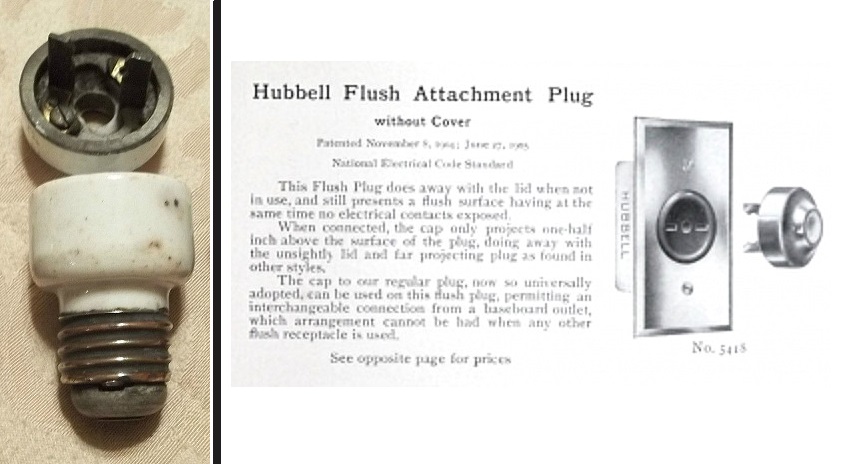The NEMA 2-15 configuration refers to tandem plugs. The tandem plug, originally rated at 10A 250V, is Hubbell's first design for a blade-type connector, created in 1903, patented in 1904. His parallel blade connector would be patented a few years later. Until ~late 1920s, there was no standard for voltage in the United States, although most small-duty appliances were operating on 120V. The "powers to be," in the late 1920s, decided, for a number of reasons, to standardize on 120V for the nation's voltage.
Most small applications in the U.S. have always been 120V, but a few were 240V prior to the late 1920s. You will sometimes find old electrical fans, light bulbs, etc. that were not exports which operate on 240V. I have an 8" Westinghouse fan from the 1910s that operates on 240V, and I have seen 240V light bulbs made by Nalco. It seems that 240V, when found, was more likely to be in places such as apartment and office buildings in larger cities. But tandem OR parallel plugs may have been in use there. When the nation standardized on 120V, they made a compromise, so to speak: 120V for lighting and general duty appliances in the home, 240v for heavy duty appliances, such as ovens, stovetops, water heaters, large space heaters, and later air conditioners and clothes dryers.
Hubbell's plug inventions were all rated at 250V. I have yet to discover any evidence of his motive in designing more than one plug configuration (there were at least 4 of them before it was all said and done), but one can reasonably assume that his latent intent at least was to account for the different voltages in use at the time. There were, however, no official voltage associations with plug configurations. (125V was officially assigned to the parallel configuration in the 1930s, but 250V was not OFFICIALLY assigned to tandem until the 1950s--it came to be "understood" as being "for 250V" by default until it was made official.) So both parallel and tandem plugs were used interchangeably. This is why we have the existence of "t-slot" outlets and its predecessor (
http://wa2ise.home.netcom.com/power/power.htm). And yes, these receptacles could be wired for either 120V or 240V. While almost all were wired for 120V, not all were, and you needed to be certain which voltage was present, as both parallel and tandem slots were energized at the same time! A "2-15r" receptacle does indeed exist, but there was never a NEMA configuration assigned to it. It seems that production of it had ceased by the 20s. You can see an example of it in one of my attached pics. It would have been rated at 10A, just like the plug. The NEMA 2-15p designation was assigned to the tandem plug in the 1950s, then the tandem plug was "banned" in the late 1960s, because it utilizes two "hot" wires and no ground. Fraidy cats, heh. T-slot receptacles were commonly made up to this time (and are still made today, believe it or not). I assume tandem plugs were also made into the 1960s.
In the 1950s, there was talk of converting the U.S. to 240V standard, but it was determined that it would be too costly and inconvenient to do so. 240V (@60Hz) is actually a more efficient system, as wire gauges used can be smaller because of, relatively speaking, the lower current drawn. And either voltage can kill. I think's it unfortunate we didn't standardize on 240V, to be honest.
Description: (l): Hubbell's original patent--tandem plug + Edison adaptor. (r): tandem plug + wall receptacle, patented a couple of years later

![[Linked Image from homerepairforum.com]](http://www.homerepairforum.com/images/uploads/2005-1-4_electrical_outlet_w550.jpg)
![[Linked Image]](https://www.electrical-contractor.net/ubb/wink.gif) Another home near this one has an original 240 delta service from 1918, due to its ancient elevator and original Otis controls. PG&E rep told me the distibtion in that area was designed around that house to keep the delta.
Another home near this one has an original 240 delta service from 1918, due to its ancient elevator and original Otis controls. PG&E rep told me the distibtion in that area was designed around that house to keep the delta.